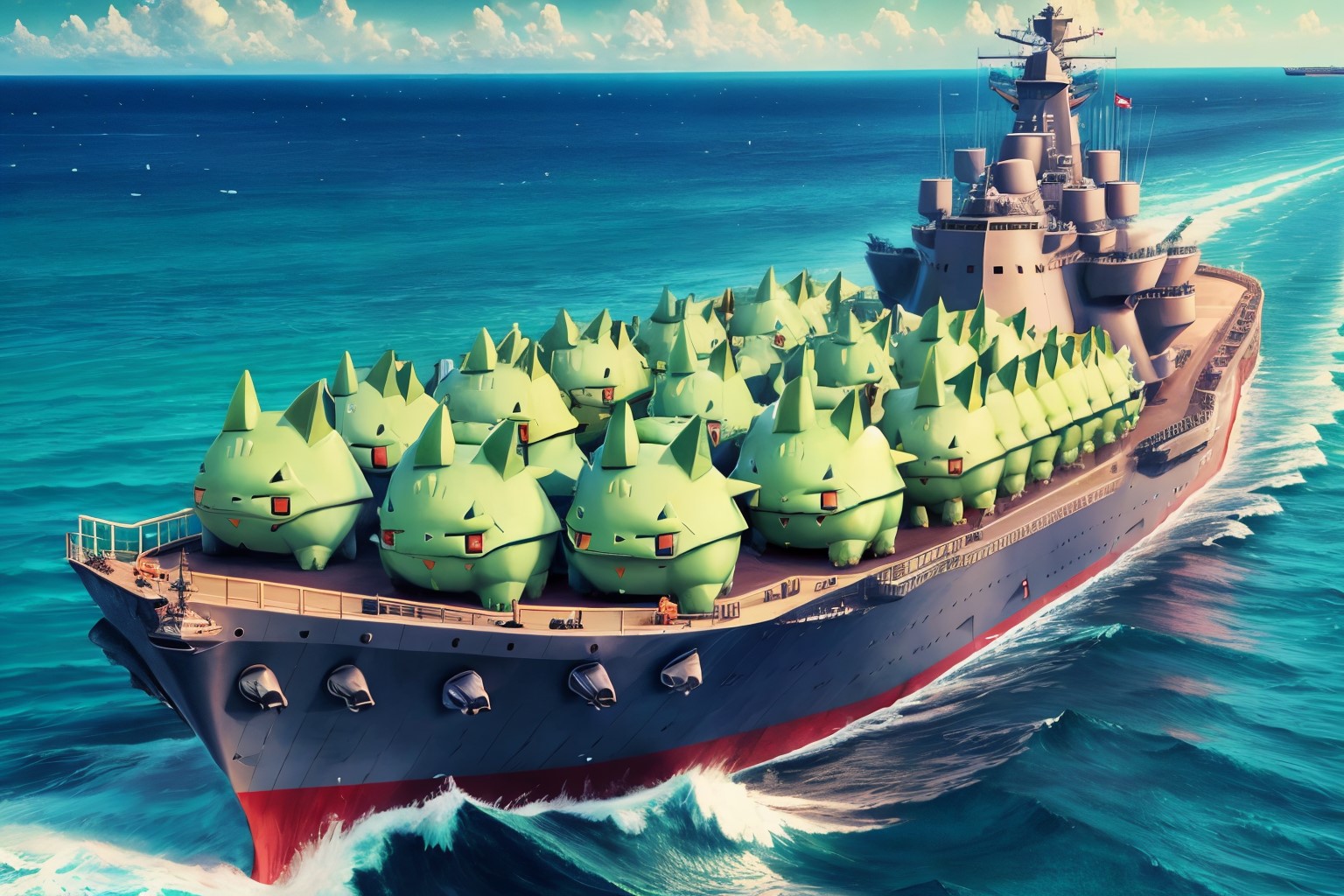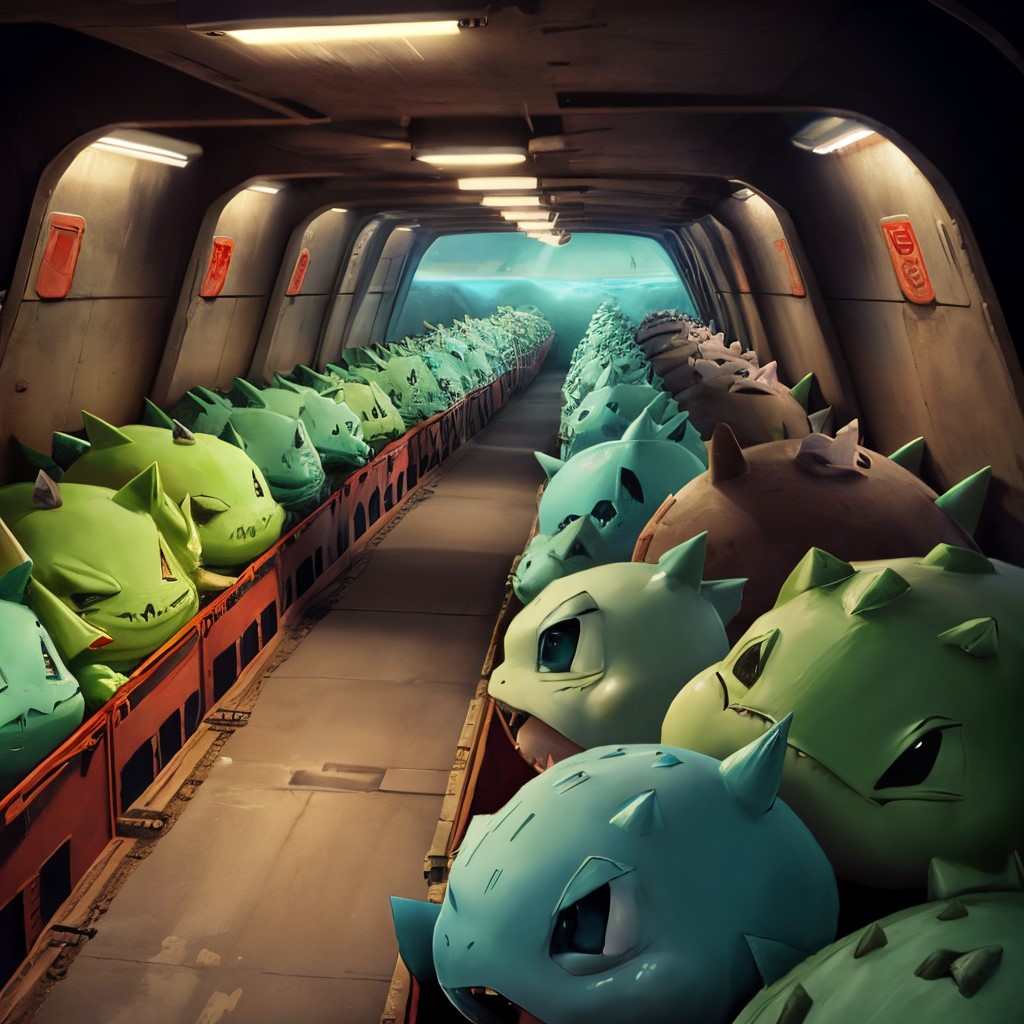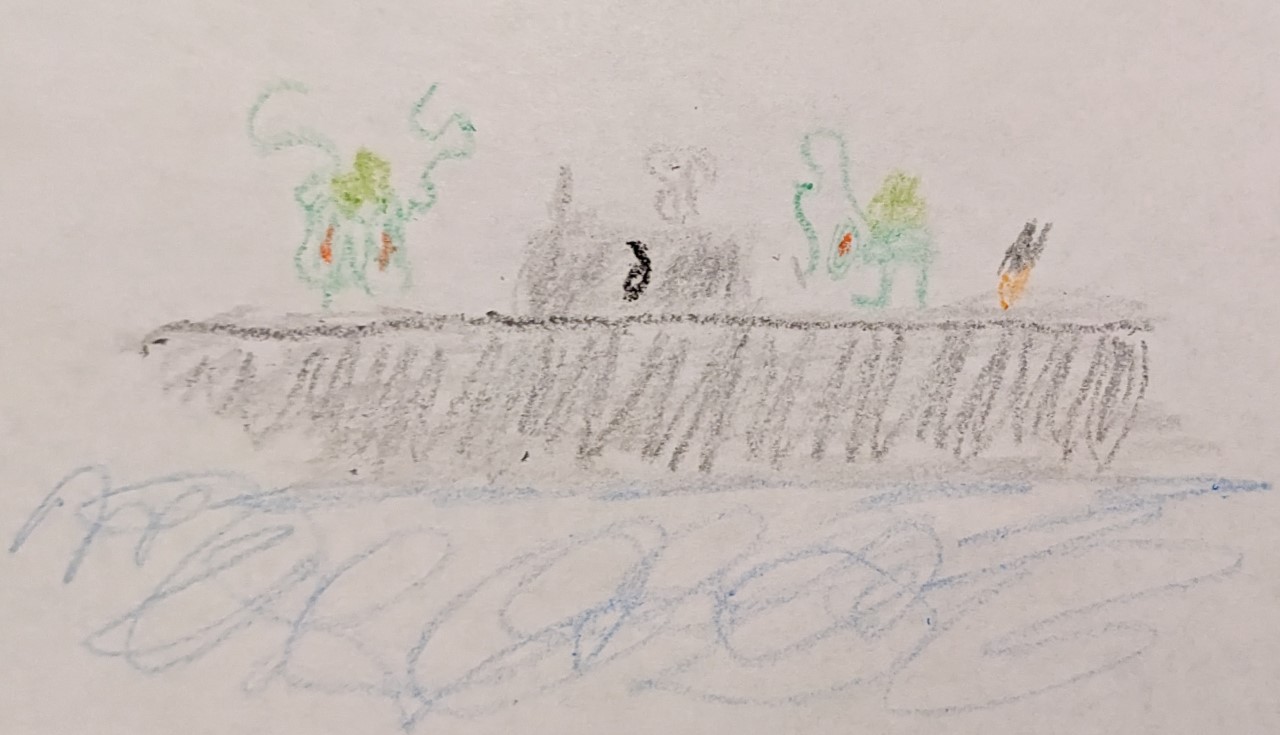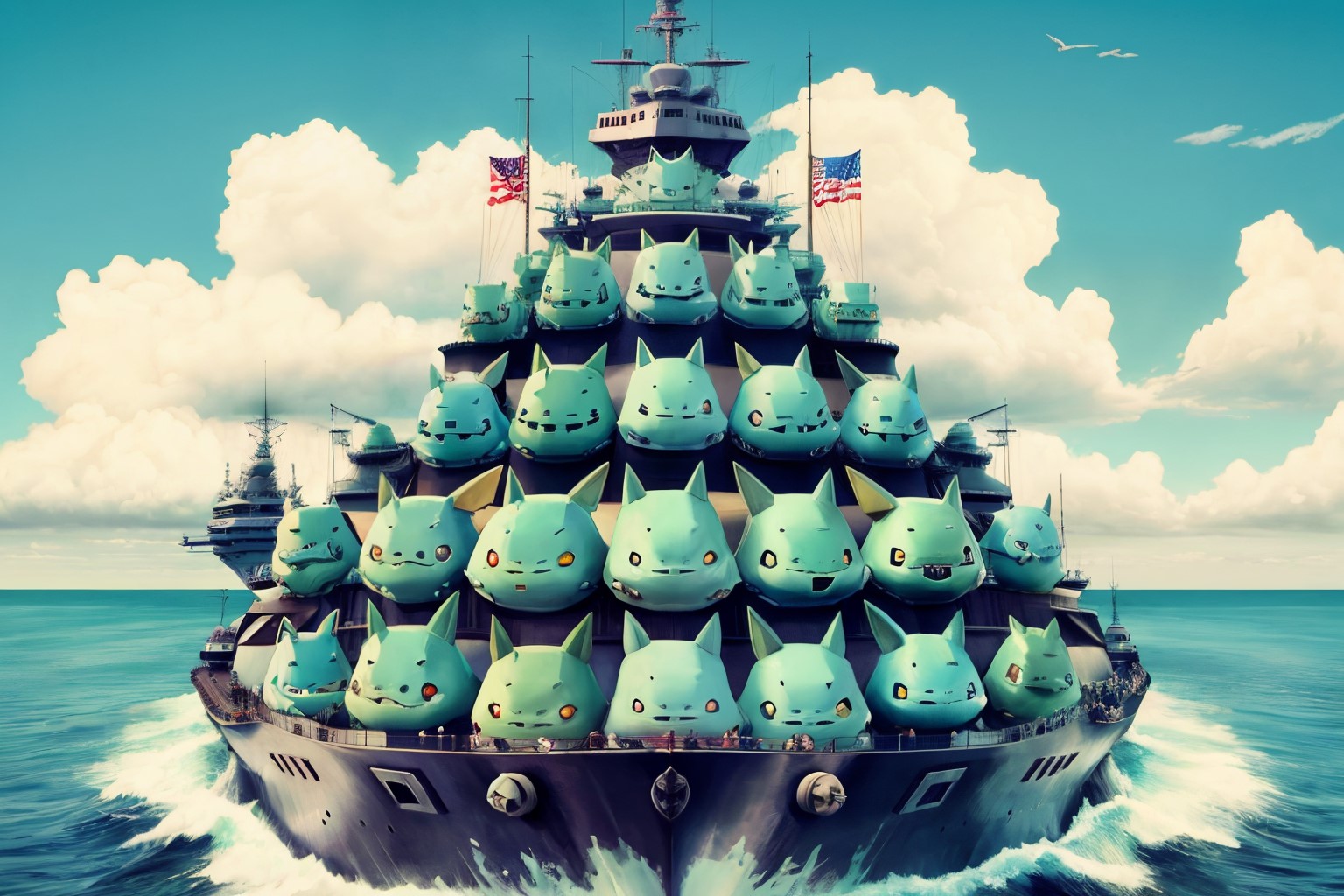Introduction:
While the JMSDF has existing guidelines for evacuation of the general population of Pokemon, in the event that there is a disaster in the Bulbasaur Land (previously known as the Galar region, before a breeding program released enormous numbers of Bulbasaurs that pushed all other species out) it would be helpful to have more precise data on the requirements for the carriage of Bulbasaurs alone.

We also discovered that some Bulbasuars assume a different form during sea transportation1
Methods:
We measured an ISO Standard Life-Size Bulbasuar, which had a footprint of 23"x16" (58.4 cm x 40.6 cm). If packed as tightly as possible, each Bulbasaur would have a footprint of only .237 m2. In practice, packing them that tightly would be cruel, and we suggest a planning basis for full-size Bulbasaurs of at least .5 m2 each. Thanks to the square-cube law, dwarf Bulbasaurs are able to stack, and based on a visit to a Bulbasaur breeder appear to not mind even being stacked several levels deep.2 We also conducted a weight sample of Bulbasaurs belonging to the breeder, and while weights ranged from 4.04 kg to 11.12 kg, the average weight according to the Pokedex is 6.76 kg.
We then investigated how many Bulbasaurs could fit aboard a ship. First, we chose to analyze the Osumi class LST, the most likely choice for disaster relief purposes. From photogrammetry and published measurements, the flight deck is 161 m long and 25.8 m wide, with an island that is 46.3 m long and 12.9 m wide, giving a total area of 3,556.5 m2, and a Bulbasaur capacity on the flight deck alone of 7,113. We would expect this deck payload of Bulbasaurs to weigh about 48 metric tons, which might require some slight ballasting to maintain stability.

Obviously, it would be preferred to carry the Bulbasaurs internally, and these ships have two obvious areas to do so: the vehicle cargo deck, which is 50 m long and 15 m wide, and the well deck, which is about 65 m long and 20 m wide. The total area of the two is 2,050 m2, allowing carriage of another 4,100 Bulbasaurs. Obviously, this is not the absolute limit, as more internal volume is available for the Pokemon. However, while Bulbasaur is quite intelligent, attempts to carry them in crewed spaces have shown that it is also quite curious, a bad combination if placed in an area with any sensitive equipment. After conducting tests, the USN has recommended that Bulbasaurs not be placed in any areas not rated for the carriage of Marines.3 We estimate that this probably would add another 2,000-3,000 Bulbasaurs aboard an Osumi, but cannot give more precise numbers without detailed plans.

Some Bulbasaurs will draw on paper when given crayons, but others do not
Other plausible candidates for Bulbasaur carriage in an emergency include the Hyuga class (9700+ on the flight deck, 2000 or so on the hangar deck), and the American amphibious ships assigned to the 7th Fleet. America, flagship of this group, has a flight deck area of about 7465 m2, approximately 1,200 m2 of vehicle space, and something like 3 times that much hangar space, to say nothing of the quarters for Marines, which we estimate could hold an additional 5,000 Bulbasaurs, for a capacity barely shy of 30,000. Seventh Fleet also has two San Antonio class LPDs, with flight decks of about 1,900 m2 and a hangar about half that size, a well deck of around 1,200 m2 and 2,000 m2 of vehicle storage, as well as troop quarters that should easily hold 3,500 Bulbasaurs, bringing the total to 15,600 Bulbasaurs. In an emergency this could be increase if structures were built inside the well deck that allowed Bulbasaurs to be housed on multiple levels. Lastly, there are two older LSDs, which are of approximately the same size as the San Antonios, and can be assumed to carry roughly the same payload. The result is that, in total, the 7th Fleet could carry over 90,000 Bulbasaurs, assuming that none of their ships have run into anything recently. Despite the best efforts of breeders attempting to create the perfect Bulbasaur, this is probably enough to evacuate the entirety of the Bulbasaur Land, even without the aid of the JMSDF.

Conclusion:
Bulbasaur is a good fit for naval evacuation in the event of a natural disaster. It is social, friendly, and generally willing to comply with requests. Note that Ivysaur and Venusaur are both significantly larger and less compliant, and should be handled using the general Pokemon evacuation procedures. We estimate that the USN's Japan-based amphibious force has enough capacity to evacuate the entirety of the Bulbasaur Land, and that the JMSDF could handle smaller incidents by itself.
1 Thanks to Conrad for serving as the experimental team photographer. ⇑
2 On a related note, we would recommend that the Pokemon Welfare Act be amended to require Pokemon breeders to provide at least 1 m2 for their Bulbasaurs. There is also a loophole that allows the entire house to be counted, even if Bulbasaurs are not allowed to go into most of the rooms. ⇑
3 Note that not all procedures for Marines should be used for Bulbasaur carriage. In particular, do not give Bulbasaurs crayons. They will not eat them, and instead will start decorating. The resulting mess is quite difficult to clean up. ⇑

Comments
Whose flag is the first ship flying? Austrian?
Yep. We borrowed the Austrian Navy's helicopter carrier for that test.
Also, how long were you able to keep this a secret from lord nelson?
Who do you think provided the ISO standard Bulbasaur?
Another fine example of my tax dollars at work.